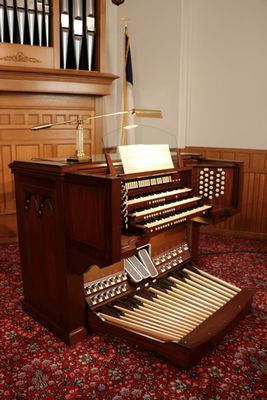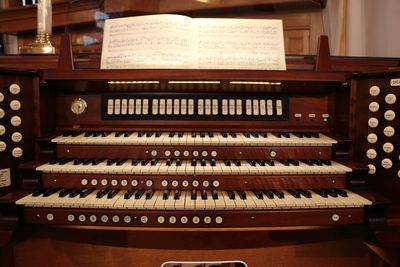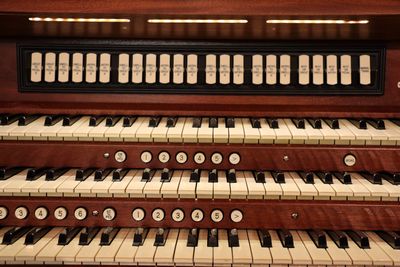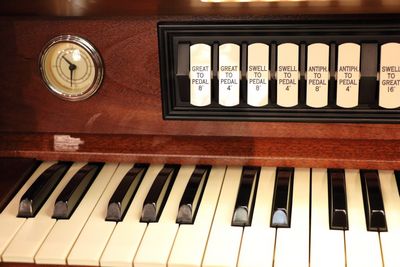 |
The
console sits in the front of the room and can be moved around the altar
area. The console can take a beating over the years, and this is this
instrument's fourth console. The original Johnson & Son console
lasted until 1959 and was replaced by local organ builder Henry J.
Durthaler during a rebuilding of the instrument. The Durthaler console
lasted until 1988 when Schantz Organ replaced it as part of their
rebuild of the instrument. |
 |
This
console has three manuals (keyboards), each representing a division of
the organ. The divisions can be coupled together by using the couplers
(tablets) across the top of the console. Some organs will also allow
divisions to be switched (ex: play the Great Division on the Swell
Division manual). |
 |
Here
is a closer view of the manual area of the console. The coupler tablets
across the top allow parts (or all) of a division to be coupled to
other divisions. The buttons are called thumb pistons and are used to
preset registrations, allowing the
organist to quickly change registrations during a piece. The >
button is the sequencer to move "forward" in the sequence of saved
registrations. This is used for long pieces which may require dozens of
registration changes.
|
 |
This
photo shows a better view of some of the couplers, as well as the
classy analog clock, which is a replica from a classic automobile. |